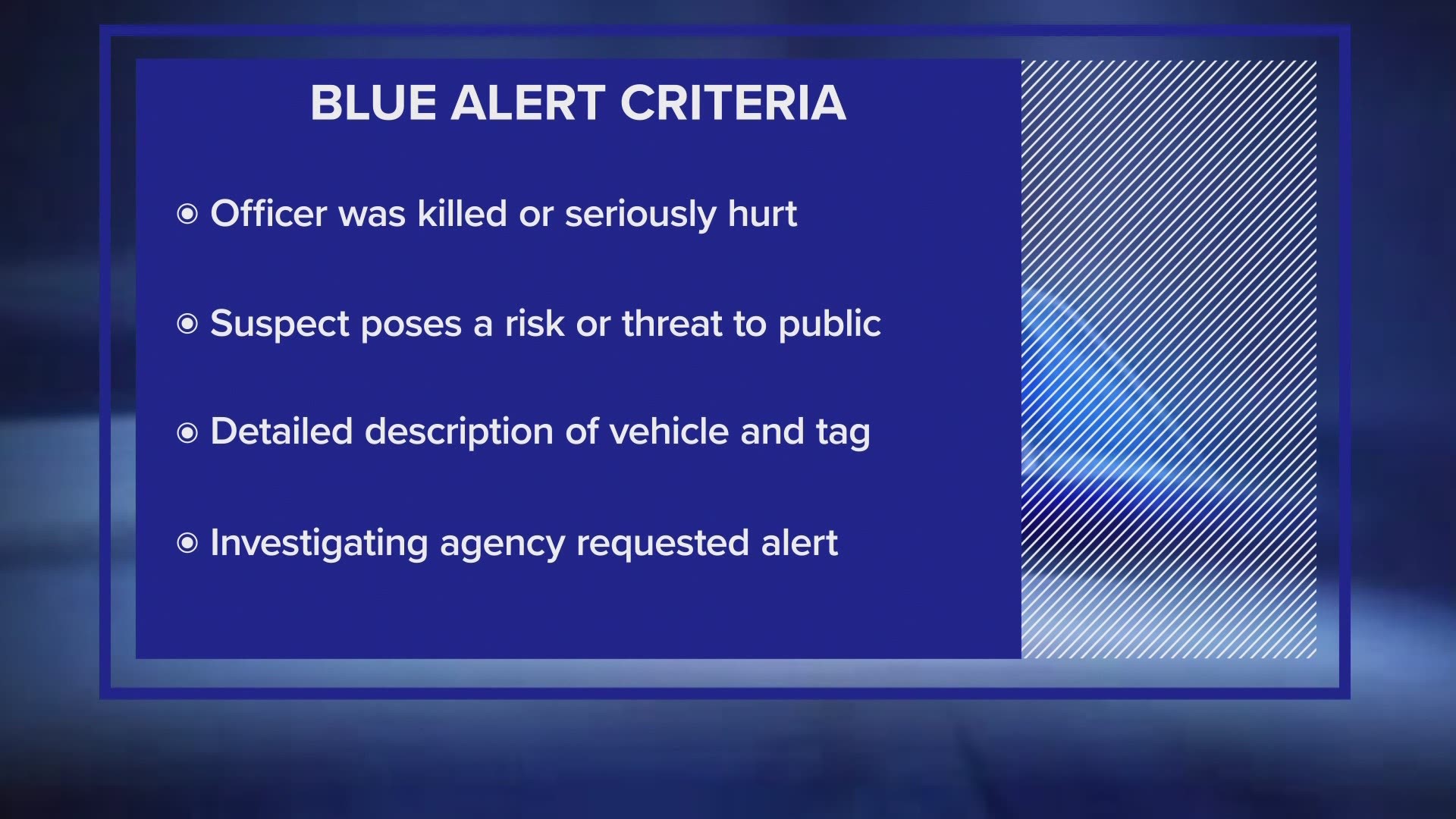Unveiling the Meaning and Significance of Law Enforcement Blue Alert
The Law Enforcement Blue Alert is a crucial system designed to protect and support the law enforcement community and the general public during times of crisis. This comprehensive article delves into the meaning, purpose, implementation, and the impact of the Law Enforcement Blue Alert system. Additionally, we will address common questions to provide a well-rounded understanding of this vital initiative.
Understanding the Law Enforcement Blue Alert
The Law Enforcement Blue Alert is an emergency notification system that aims to disseminate critical information to the public, law enforcement agencies, and other stakeholders when a law enforcement officer is missing, seriously injured, killed, or under imminent threat. Much like the Amber Alert for missing children, the Blue Alert system plays a pivotal role in enhancing the safety and well-being of both the law enforcement community and the broader population.
Origins and Development
The Blue Alert system traces its roots to the tragic events of 2010 when two West Memphis, Arkansas police officers, Bill Evans and Brandon Paudert, were brutally murdered during a traffic stop. The assailants fled the scene, prompting a statewide manhunt. This incident led to the creation of the Blue Alert concept and its subsequent adoption in various U.S. states.
Key Elements of the Law Enforcement Blue Alert
To effectively understand the Law Enforcement Blue Alert, it is essential to recognize its fundamental components:
- Immediate Notification: When a law enforcement officer is killed, seriously injured, or missing, the Blue Alert system ensures rapid and widespread dissemination of information. This includes sending alerts to law enforcement agencies, news outlets, and the general public.
- Public Awareness: The system harnesses various communication channels, such as television, radio, electronic highway signs, social media, and cell phone notifications, to reach a broad audience and solicit assistance.
- Suspect Information: Blue Alerts provide information about the suspect, their vehicle, and any other pertinent details to aid in locating and apprehending the individual responsible for the threat or harm.
- Collaboration: Blue Alerts foster collaboration between law enforcement agencies, media outlets, and the community, as the timely dissemination of information is crucial for a successful resolution.
Significance and Purpose
The Law Enforcement Blue Alert serves several vital purposes:
1. Protection of Law Enforcement Personnel
The primary goal of the Blue Alert system is to safeguard the lives of law enforcement officers. By rapidly spreading information about a threat or an attack, it aids in the apprehension of suspects and mitigates further harm to the law enforcement community.
2. Apprehension of Suspects
By promptly notifying the public and law enforcement agencies of a dangerous situation, the Blue Alert system increases the chances of identifying and capturing suspects, ultimately leading to swifter justice.
3. Public Engagement
Blue Alerts engage the public in the safety and well-being of their communities. The system relies on the watchful eyes of citizens to help locate suspects or provide valuable information to law enforcement.
4. Deterrence
The existence of the Blue Alert system acts as a deterrent, discouraging potential offenders from targeting law enforcement officers, knowing that their actions will trigger an immediate and comprehensive response.
Implementation of the Blue Alert System
The implementation of the Law Enforcement Blue Alert system involves a well-defined process:
1. Reporting an Incident
The system is initiated when an incident involving a law enforcement officer’s serious injury, death, or disappearance is reported to the relevant authorities.
2. Verification
Law enforcement agencies and officials must confirm the incident’s authenticity and ascertain that it meets the criteria for issuing a Blue Alert.
3. Alert Issuance
Once verified, the Blue Alert is immediately issued through various communication channels, ensuring that the information reaches a wide audience.
4. Ongoing Updates
Law enforcement agencies and authorities responsible for the case continue to provide updates and critical information as the situation unfolds, helping to maintain public engagement and awareness.
Legal Framework and Legislation
The adoption and functioning of the Blue Alert system are governed by specific state laws and regulations. While the exact legal framework varies from state to state, many have enacted legislation to authorize and define the system’s operation. These laws also outline the criteria that must be met to trigger a Blue Alert and the responsibilities of law enforcement agencies, media outlets, and other stakeholders.
The Impact of the Law Enforcement Blue Alert
The Law Enforcement Blue Alert has had a profound impact on the law enforcement community and society as a whole. Some of the notable effects include:
1. Enhanced Officer Safety
The system’s swift response to threats has contributed to the safety and security of law enforcement personnel. Knowing that the Blue Alert system is in place provides a sense of reassurance to officers in the field.
2. Community Engagement
Blue Alerts foster a sense of community engagement and cooperation. They encourage the public to actively participate in the protection of law enforcement officers and the apprehension of suspects.
3. Apprehension of Suspects
The rapid dissemination of information has resulted in the swift identification and capture of suspects in many cases. This, in turn, has led to the timely resolution of criminal investigations.
4. Deterrence
The existence of the Blue Alert system serves as a powerful deterrent, discouraging potential assailants from targeting law enforcement officers.
Frequently Asked Questions (FAQ)
1. What is the difference between the Blue Alert and the Amber Alert?
The Amber Alert is primarily used for missing children, while the Blue Alert is specifically designed for situations involving law enforcement officers who are killed, seriously injured, missing, or facing imminent threats.
2. Are Blue Alerts only issued for attacks on law enforcement officers, or can they also be used in other situations?
Blue Alerts are primarily intended for incidents involving law enforcement officers. However, the exact criteria for issuing a Blue Alert can vary by state, and some states may extend its use to include other scenarios.
3. How effective is the Blue Alert system in apprehending suspects?
The effectiveness of the Blue Alert system depends on several factors, including the timeliness of the alert, the accuracy of suspect information, and public engagement. In many cases, it has proven to be an invaluable tool for locating and apprehending suspects.
4. Can the public sign up to receive Blue Alerts on their phones?
Yes, in many regions, the public can sign up to receive Blue Alerts and other emergency notifications on their phones through various alert systems or mobile apps.
5. What should I do if I receive a Blue Alert on my phone or see it on a highway sign?
If you receive a Blue Alert or see it displayed, follow any instructions provided, and remain vigilant. If you have relevant information or spot the suspect, contact the authorities immediately.
6. Are there any penalties for making false reports that trigger Blue Alerts?
Making false reports that lead to the issuance of a Blue Alert is a serious offense. Penalties may include criminal charges and legal consequences.
7. Are Blue Alerts issued nationwide, or is the system state-specific?
Blue Alerts are generally issued on a state-by-state basis, and the specific criteria and implementation may vary from one state to another.
8. Can anyone access Blue Alert information, or is it restricted to law enforcement?
Blue Alert information is typically accessible to law enforcement, media outlets, and the public. The goal is to engage the community and encourage their participation in the safety and well-being of law enforcement officers.
9. How can I stay informed about the Blue Alert system and its activation in my area?
To stay informed about the Blue Alert system and its activation in your area, you can check with your state’s law enforcement agency, sign up for emergency alert notifications, or follow local news sources and social media channels.
10. Are there any ongoing efforts to improve and expand the Blue Alert system?
Efforts to improve and expand the Blue Alert system are ongoing. States continue to refine their legislation and procedures to ensure its effectiveness and relevance in safeguarding law enforcement officers and the public.
Conclusion
The Law Enforcement Blue Alert is an indispensable system that plays a vital role in protecting law enforcement officers and ensuring the swift apprehension of suspects who pose a threat to the community. By promptly disseminating information and engaging the public in the process, the Blue Alert system exemplifies the power of collaboration and collective responsibility in times of crisis. Understanding its meaning, purpose, and impact is essential in appreciating the significance of this critical initiative in modern law enforcement.


